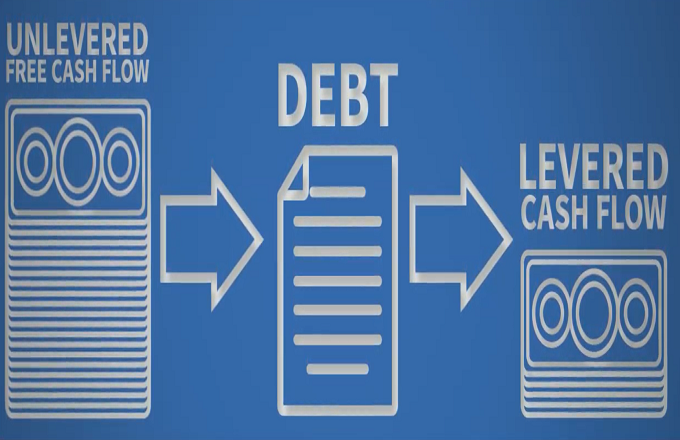
The EBIT measure is earnings BEFORE interest and taxes. Note how this equation begins with EBIT rather than Net Income. Unlevered FCF = EBIT (1-Tax Rate) + Depreciation/Amortization – Changes in Working Capital – Capital Expenditures.
Levered vs unlevered cash flow formula free#
When unlevered free cash flow is calculated, financial obligations have not been paid yet. Unlevered free cash flow is the cash flow available to both debt and equity holders. Since debt has already been paid, the remainder is left for equity investors.Ī third calculation of free cash flow calculates unlevered free cash flow. Levered free cash flow is calculated after the business has paid its obligations (ie it has paid its debt already). The “levered” refers to the debt obligations. Levered free cash flow is cash flow that is available to equity investors. The two calculations above calculate what is called levered free cash flow. Using the second equation, the math would be the following:įCF = $2,000 + $500 + $70 + $20 – $70 -$350 = $2,170īoth yield the same result. If you aren’t given the statement of cash flows, you can calculate FCF using items from the income statement and balance sheet. Using the first equation, you can quickly calculate free cash flow by subtracting capex from cash flow from operations. Imagine that you know the following about ABC Company: FCF = Net Income + Depreciation/Amortization – Changes in Working Capital – Capital Expenditures.Simply find the line items for cash flow from operations and capital expenditures. You can also derive free cash flow using the income statement and the balance sheet.īelow is the second equation used to calculate free cash flow: The variables to this calculation can be found on a company’s statement of cash flows. FCF = Cash Flow From Operations – Capital Expenditures.One thing about free cash flow is that there are a few ways to compute it. We’ll begin with the easiest calculation: It has to be calculated and derived from a company’s financial statements. There isn’t a free cash flow line item in company filings.

The result is that free cash flow isn’t easily laid out for the public to see. US GAAP does not require companies to report or disclose free cash flow. “How much cash does this company have to use for other purposes to bring value to shareholders?” FREE CASH FLOW FORMULA AND CALCULATION They will see free cash flow and ask themselves. Investors can look at free cash flow and draw a number of conclusions to make investment decisions.

This metric only considers cash.īecause of those two traits, free cash flow is seen as a transparent metric to show the financial health of a company.įree cash flow is cash that is available for discretionary use. Additionally, earnings take non-cash items into consideration and free cash flow does not. Free cash flow is harder to manipulate than earnings are. Many investors and analysts look at free cash flow over earnings and net income.


The ultimate goal is to maximize the value of the firm.įree cash flow is considered to be one of the most important financial metrics to look at in a business. Hence the name “free cash flow.”Ī company will use free cash flow for a number of things including paying down debt, issuing dividends, investing in itself by funding new operations and projects, and investing in itself by buying back its own shares.ĭeciding what to use free cash flow on will come down to risk, return, and micro and macro circumstances. It is a measure of profitability to analyze the cash a company has on hand available to use freely. Free cash flow represents the amount of cash generated by a company after paying expenses to run the business and maintain capital assets.


 0 kommentar(er)
0 kommentar(er)
